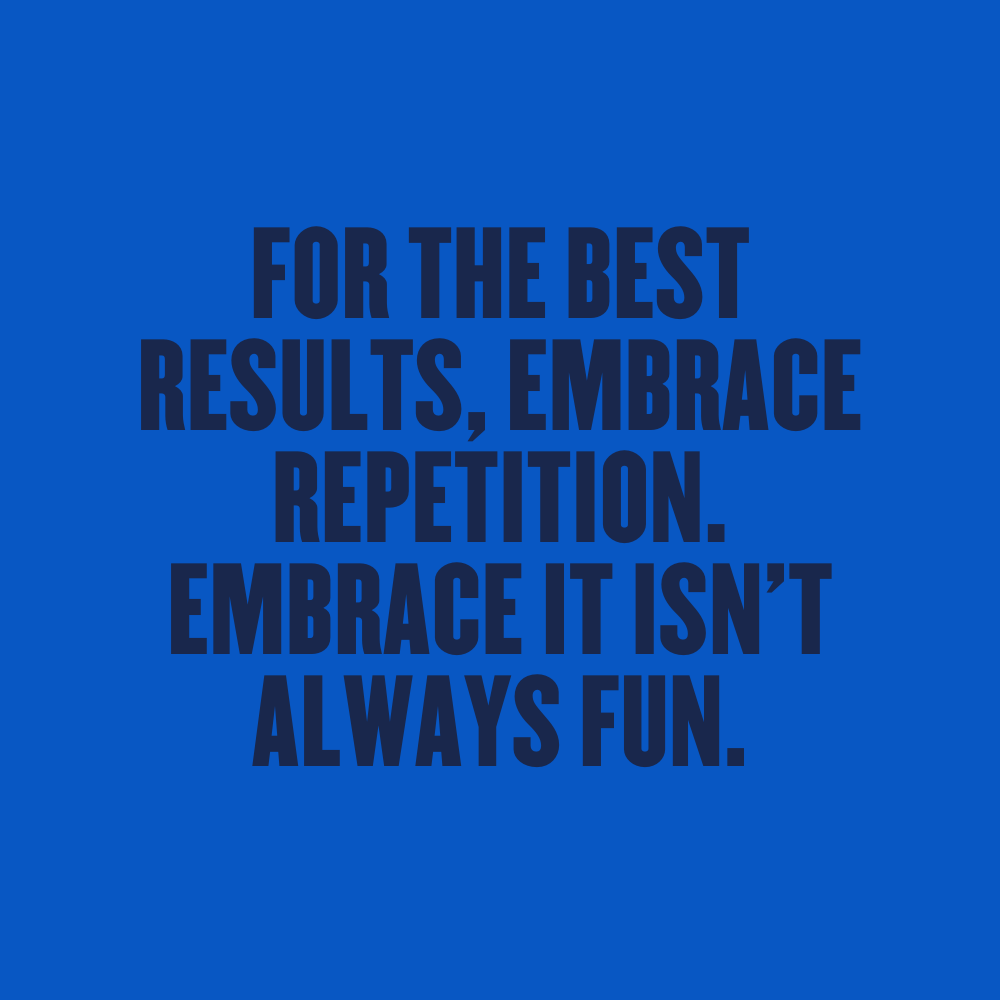UNDERSTAND
TRAINING VOLUME
Starting a fitness routine can be exhilarating and bewildering, especially if you're new to exercise. Amidst a sea of workout information and programs, a fundamental concept stands out – training volume. Let's talk about it, exploring the synergy between quality and quantity, and unveil your starting point on the path to a stronger, healthier you.
What does it mean?
Training volume quantifies the total work your muscles experience during a workout session. Volume is measured by the number of effective sets per muscle group. You can count up a single session total or a weeks total. This metric determines the stress on your muscles and joints, shaping your progress and potential. Consider it for each exercise or muscle group. Its significance lies in its influence on muscle growth, strength gains, endurance improvements, and the overall effectiveness of your efforts. We usually focus on tracking the number of harder or effective sets you perform, as those are likely to have the biggest affect on your growth, and are likely the ones prescribed in your program. Effective sets are performed with a few reps left before technical failure. Recommendations vary based on training experience.
Training volume comprises three building blocks: sets, repetitions (reps), and weight. The formula is elegantly simple: Volume = Sets × Reps × Weight.
- Sets: These denote how many times you perform a specific set of reps for an exercise. Imagine completing three sets of squats, each comprising 10 reps – your total sets for squats would be three.
- Repetitions (Reps): These represent the count of times you replicate a specific movement within a set. So, each set of squats involves 10 reps.
- Weight: This refers to the resistance or load you lift for each rep. It could be your body weight, free weights, resistance bands – any form of resistance that challenges your muscles.
Don't discount the influence of the not so hard sets. You know how much all those little things add up. We're just looking to measure the valubale exposures in our lives, the ones that shape us.
Why should you care?
We advocate mastering your training, developing autonomy. Engaging with your training fosters comprehension, enabling you to make informed decisions tailored to your journey. Why does this matter? Because it empowers you to navigate the ebb and flow, determining the balance between pushing limits and nurturing recovery – essentially, your workout becomes your realm of control.
As a beginner, it's tempting to equate success with high reps and sets. Not all volume is created equal. True success lies in balancing quantity and quality. Instead of pitting them against each other, realize they're interdependent. Quantity embodies measurable effort, while quality introduces subtlety through two lenses:
- Qualitative Performance: How you execute each rep matters. The form you employ shapes your competency in that stance, directing muscle engagement and shaping your training focus. It depends on factors like tempo, genetics, experience, exercise selection, effort, training frequency, and the load you’re using. Understand the purpose; distinct approaches yield different outcomes.
- Qualitative Experience: How you feel before, during, and after each rep holds value. Are you attuned to your muscles? Did you find the desired range of motion? Did you encounter discomfort? Your experience offers insights – engaging with your workout empowers you to fine-tune and adapt. Don’t forget to consider the stressors outside the gym.
Where should you start?
Starting small and gradually amplifying your training volume is sensible. Remember, adding is easier than subtracting. Our coaches recognize that everyone starts at a unique point. They're your guides, assisting you in finding the optimal balance – challenge without overwhelm, fostering steady progress.
- Personalize for Your Needs: Initially, focus on learning and growth. Before delving into how much you're doing, grasp the mechanics of each movement and your influence. The qualitative aspects sculpt your outcome. Partner with a coach who tailors exercises to your structure, empowering you to make adjustments.
- Set Milestones: Gradually escalate training volume as your body adapts, resulting in sustained advancement. Once basics are grasped and movement consistency nurtured, set Key Performance Indicators (KPIs). These benchmarks provide tangible measures, prescribe weights, and offer insight into your program.
- Engage and Execute: Practice exercise variations to boost confidence incrementally. Benchmarked numbers lay the foundation for personalized weight and effort choices. Guided by a program designed to introduce varying volumes, progress unfurls at your pace. With knowledge and coaching, gaps are filled, and questions answered.
Always remember – it's not just about how much, but how well. The journey is enriched when comprehension is paired with support. As time passes, you gather more experience and a body of work to evaluate. Combine the qualitative measure of your experience with the total volume of work to understand when to add or subtract. Together we can light the pathway through the labyrinth of training volume, and make sure you don’t do more work than you need to.
Stay tuned for insights catering to what we do inside the gym, ensuring your fitness has substance and meaning.
Keep Reading






















































